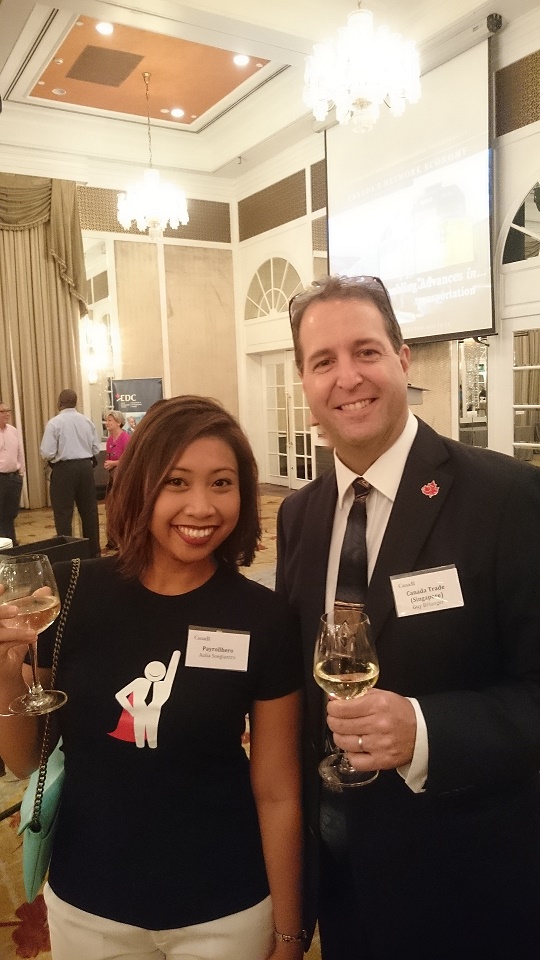Jason Dorsey is a the Millennials keynote speaker. He delivers great information on how todays young adults operate, how to interact with them in the workplace and why they are so different than generations in the past. Here is a promo video that puts together some snippets from his talks all over the world. A great watch with some funny moments on the differences between baby boomers and todays youth.
Monthly Archives: June 2015
The Secret to Keeping Young, Ambitious Talent? Let Them Go. (Video)
Listen to what Kevin Roberts, CEO of Saatchi & Saatchi has to say about young talent.
Some great quotes:
“People can call themselves what they want, I don’t care”
“We turn over 1/3 of our people every year, so I have a new company every 3 years”
“We don’t retain anybody”
Continue reading
4 Job Boards to Hire Your Best Recruits in Southeast Asia
 Today, there are a mind boggling number of channels to use while searching for the best candidate to join your team. In Singapore, the number one channel for recruiters to hire employees is through an online jobs portal. The other Southeast Asian nations are catching up to the trend. Which means, not only do you have to post in multiple online portals, you also have to stand out from every other company in your industry because everyone is using the most popular channel. We want to help you with that. Here we have a list of jobs portals, both conventional and specialized, for restaurant and retail owners to recruit staff.
Today, there are a mind boggling number of channels to use while searching for the best candidate to join your team. In Singapore, the number one channel for recruiters to hire employees is through an online jobs portal. The other Southeast Asian nations are catching up to the trend. Which means, not only do you have to post in multiple online portals, you also have to stand out from every other company in your industry because everyone is using the most popular channel. We want to help you with that. Here we have a list of jobs portals, both conventional and specialized, for restaurant and retail owners to recruit staff.
Recruitasia: This website is devoted to the hospitality sector in Singapore. This is a great site for very specific roles for your establishment. It also provides industry news so that you can stay ahead of the curve when you are recruiting. Currently, the website is in beta stage. During this stage, jobs can be posted free of charge while the website is adding new features and receiving customer feedback to improve their application procedure.
JobsDB: This website runs ads in many Southeast Asian countries: Singapore, Indonesia, the Philippines, Thailand and China. In Singapore, it currently has 300 positions posted on the website under F&B. In the Philippines, the site features 960 positions. Every recruiting ad costs SGD 99. However, JobsDB is turning over all Job ads to JobStreet.com.ph in order to streamline the two recruiting sites into one.
JobStreet.com: JobStreet runs in Singapore, the Philippines, Malaysia, Indonesia and Vietnam. Currently, the Singapore site is featuring approximately 800 vacant positions in the F&B industry.This is the largest recruitment website in the Philippines and one you cannot miss while posting ads. The Philippine website is currently running a promo package that is 40% off the standard price (the standard price being PHP 5,600). The Singapore website runs 3 packages, based on number of ads you want to post and how long you want them to stay live. The price ranges between SGD 180 to SGD 400.
 Kalibrr: This startup recruitment website works on a completely different pricing strategy. Instead of charging employers per ad, the ads are free and the database is open for employers to find their best candidate. They are charged a minimal fee of PHP 50 only when they want to contact the candidate. This company is becoming increasingly popular in the Philippines with around 1000 applicants signing up every day. Kalibrr features restaurants and retail as the most popular searches. (Disclosure, both Mike Stephenson and Stephen Jagger of PayrollHero are investors in Kalibrr)
Kalibrr: This startup recruitment website works on a completely different pricing strategy. Instead of charging employers per ad, the ads are free and the database is open for employers to find their best candidate. They are charged a minimal fee of PHP 50 only when they want to contact the candidate. This company is becoming increasingly popular in the Philippines with around 1000 applicants signing up every day. Kalibrr features restaurants and retail as the most popular searches. (Disclosure, both Mike Stephenson and Stephen Jagger of PayrollHero are investors in Kalibrr)
These four are a few of the most popular recruiting website in Southeast Asia. We hope this list is useful and do let us know if you have any additions to the list that are unconventional or special to the retail or restaurant industries.
5 Ways to Make your Business Card Stand Out
With a first glance at the title, you might wonder: Who uses business cards anymore?!
While that might be true in some regions of the world, one of our first lessons in Southeast Asia was the importance of business cards. As a college student, I have been to career workshops in school that devote entire sessions on how to stand out using your business card: from creating a unique design to the way you hand the card to someone you have just met.
So let’s get down to business:
- The vertical layout: Usually business cards are horizontal. But if you think about it, the horizontal design does not optimize space. Even if you add details in two columns to use the space effectively, it looks odd. The advantage with the vertical design is, there is plenty of space to add in contact links (LinkedIn, Facebook, Twitter), while also standing out from the other, conventional, horizontal layouts.
- Add in your picture: Most business cards have the company’s logo on it. Which is why putting a picture of yourself on the card makes it stand out. Agreed, it takes up inches on your card. But if you can get someone to tag your face to the name, then the purpose of your business card is fulfilled.
- QR code: In keeping with the times, a QR code linking to your social media pages or a discount platform on your website will pique interest in your business-card-receiver. It could even link to a landing page which allows you to keep track of who is receiving and looking at your business card. Make sure it works though! You don’t want this to turn into an embarrassment.
- Radical designs: This one requires some thought. A banker with a radical business card probably won’t go very far, but if you’re in the restaurant business or any creative industry, it’s worth exploring ideas that can make your card stand out. You can break off from the rectangular layout and try a layout that makes your business
self explanatory. For example, a yoga centre made their business card look like a yoga mat; a bakery made their business card look like a cookie cutter. You can explore with materials as well: there is no rule that says it needs to be made of paper.
- Offering your card: Knowing how to give your business card is as important as the card itself. Try not to make it look like your card is given to just about anybody. It’s a unique marketing tool that is handed to someone deliberately and with great regard to who it goes to. Giving it with both hands is a sign of reverence. It also helps if you have a hook when you offer your card, maybe a memorable catch-phrase or a joke. I know, it sounds cheesy, but again, if you can get someone to tag your face to your name, then that cheesy joke is worth a shot.
Bonus Points: In Asia, many people refer to “business cards” as “calling cards”.
Hope these 5 points help. Let us know if you have any more ideas on business cards that stand out.
Singapore Corporate Taxes 102: Auto Inclusion Scheme

Our Singapore Corporate Tax lessons are back! (I know what you’re thinking… nothing says exciting like taxes). This time we’ll be talking about how employers in Singapore should handle tax forms for their employees. The IRAS is trying to digitize the entire system by introducing the Auto Inclusion Scheme this year and linking it to CPF contributions. In short, filing tax returns is going to be a smoother, more integrated process.
Under the Income Tax Act, there are four forms that employers should be aware of:
- Form IR8A: This is to declare income of all employees
- Appendix 8A: This form should be completes if the employee is provided with benefits-in-kind unless these benefits are exempted from Income Tax
- Appendix 8B: If the employee has benefited from any Share Ownership Plans, then this needs to be completed
- Form IR 8S: Must be completed if excess CPF contributions are made by the employer.
Explanatory notes on each form are here. Income tax returns must be filed for the following people:
- Full time resident employees
- Part time resident employees
- Non-resident employees
- Company director (including a non-resident director)
- Pensioner and
- Employees who have left the organisation within the financial year
For your reference, here are the tax rates for different income brackets:
| Taxable Income Bracket | Total tax on income below bracket | Tax rate on income in bracket |
| 0-20,000 | 0 | 0 |
| 20,001-30,000 | 0 | 2 |
| 30,001-40,000 | 200 | 3.5 |
| 40,001-80,000 | 550 | 7 |
| 80,001-120,000 | 3,350 | 11.5 |
| 120,001-160,000 | 7,950 | 15 |
| 160,001-200,000 | 13,950 | 17 |
| 200,001-320,000 | 20,750 | 18 |
| >320,001 | 42,350 | 20 |
The Auto Inclusion Scheme is a system for recording employee income and tax related information for companies with 12 or more employees for the entire year, ending 31 December 2014. Companies have to submit employee information to IRAS electronically by March 1st of every year, starting from 2015. This way, companies do not need to distribute hard copies of the above forms for employees to file their income tax returns.
If employers use payroll software to generate payroll, then the software can be used to submit files to AIS using another (free) software provided by the IRAS called the Validation and Submission Application. The payroll software should meet the IRAS file format specifications in order to submit forms. The Validation and Submission Application software can be downloaded here.
Once every employee’s details are filled in through AIS, companies should inform their employees to file their tax returns through the myTaxPortal. Employees no longer need to fill in their income and details from the four forms above because the AIS system already has it stored.
Employers who have fewer than 12 employees are also encouraged to use the AIS by filling out this form and emailing it to ais@iras.gov.sg. After submitting the form, companies will also have to go through a trial exercise before joining the AIS.
The AIS system can be linked to CPF Data in order to fill up Form IR 8S easily. The system makes for smooth functionality across the IRAS and CPF platforms. To sign up for the AIS and CPF Data Link-up Service from 2016, this application form must be filled. For existing AIS members who want to use the CPF Data Link-Up Service, this application form must be filled.
Hope this helps! If you want to know how to pay up CPF contributions, we’ve got you covered. More on Tax Clearance and CPF contributions later.
Disclaimer: As always, consult your lawyer or accountant for advice! We are here to help, but your specific situation should be reviewed by a professional with complete knowledge of your situation.
How to Get an Import License in Singapore

How do you import the best ingredients for that awesome burger?
Scenario 1: Your restaurant is up and running. We’ve got your back with the liquor license. But now, you want to introduce a new segment to your restaurant: modern Japanese. You realize you need to import supplies in order to wow your customers.
Scenario 2: You are running a grocery store and want to sell imported products: meat, fish, eggs, processed food. Your supplies are coming in from all over the world and the suppliers are ready for business.
Your imported supplies need to be approved by Singapore Customs. You need an import license before you do anything else. How do you proceed?
Step 1: You need to register with Agri-Food & Veterinary Authority of Singapore (AVA). But before that you must make sure of the following:
- Ensure that the imported products comply with the General Classification of Food and Food Products
- Do note that importing fresh table eggs require an additional screening process to ensure that you have complied with the storage requirements. More on this here.
- Make sure that the food establishment that is exporting food to Singapore is accredited by AVA. You can check here if the country or food establishment you are importing from is accredited by AVA.
- An active Unique Entity Number (UEN) with Singapore Customs. To learn how to activate your customs account, click here.
- A GIRO account for the payment of fees
Step 2: Submit an application to AVA through the e-licensing website. You can apply for a license to import meat, fish products, fresh fruits, vegetables and table eggs. To import processed food products and food appliances, you have to register on the same website (no license).
Step 3: You must pay for your license via GIRO
Here are the charges for licensing and registration fees:
| License for Import/Export/Transshipment of Meat and Fish Products | SGD 84/year | Normal Service: 1 working day to processExpress Service: Same day processing. Pay an additional fee equal to the cost of your licence |
| Licence for Import/Transshipment of Fresh Fruits and Vegetables | S$378 per annum | Normal Service: 1 working day to processExpress Service: Same day processing. Pay an additional fee equal to the cost of your licence |
| Licence to Import Table Eggs | Free | 5 working days to process |
| Registration to Import Processed Food Products and Food Appliances | Free | 1 working day to process. |
The process is straightforward and quick.
What To Do After The 3rd Store Grand Opening

Image by decor8blog.com
Success in your business would mean it’s time to expand, but this feat does not come without it’s own set of challenges.
After interviewing 3 different owners for our Retail/ Restaurant Executive Series, I’ve learnt that they all faced similar challenges in management, as soon as they’ve reached their 3rd store opening.
Here are some of the problems and solutions used by our retail/ restaurant executives when managing multiple store locations.

Managing multiple locations means using technology to cut down on travel expenses
Implementing a different management system is necessary when you have several stores to oversee. Although it is not impossible, but it takes a lot of effort for you to constantly schedule your travel time to supervise different stores at different locations. Travel costs will pile up even more if your stores are located at different countries.
Getting your hands on free, cheap or available SaaS (software-as-a-service) solutions will be save your company a chunk of money. While some businesses have their own custom- built software platforms as collaborative platforms, some of the more commonly-used tools are available online and widely used by small business owners. Some of the best cost saving productivity tools are available online- free or at low monthly costs like Google Documents, Skype, PipelineDeals.com.
As mentioned by our retail executive Andrew Masigan, owner of The Advent Manila Hospitality Group in the Philippines, he advice that “the trick is to put the important systems in place… the efficiency your company’s chain-of-command largely determines
how well your stores operate”.
Managing multiple locations means having putting a system in place
“You must have systems in place to be able to standardize the quality of your communications, products and results,” says Bert Martinez, founder of Bert Martinez Communications. Ensuring a strong internal system of operations would mean that you can save costs on training and reduce time required for supervision. Each employee will have a clear understanding of their responsibilities and boundaries.
In our interview with Adrien Desbaillets, President at SaladStop, he says that “a strong infrastructure is required to support the operation. Overheads start to escalate and a strong focus on SOPs, training, technology is required.” The point here is then to make each employee’s responsibility crystal clear through an organised structure and combine that with a system that measures each person. That way, everyone is accountable for delivering their work regardless of which location they are based at.
Managing multiple locations means shifting from micro management to systematized macro management
Before, Eileen Grey– owner of The Picture Company in the Philippines, didn’t need to think about an entire infrastructure when she opened her first store. She recalls it being just “very personal and mom and pop” until her 3rd store opening. Now she has to consider personnel training, back office space, production, logistics and others.
Having systems and technology in place is good for the business, but it wouldn’t help much if there is no focus on communication. Establishing good communication practices within the whole business is key to collaborate with offices at different locations, co-workers and clients.
Good tips to foster good communication between offices at different locations can include using webcams during weekly team meetings or webinars so team members can see each other, establish a daily reporting system online and use a centralized task management software like Asana, Trello and others.
(Read on how PayrollHero stays in sync with our other offices across the globe)
PayrollHero can help you efficiently manage your multiple business locations and cut down on costs. Talk to us about our business or meet us at our next Meetup!
Canada B2B Networking Marketplace: The Post Event Write-up
Great turn out at the Canada B2B Networking Marketplace
The energy at the event was amazing as business owners are enthusiastic to share their product stories with others in attendance.
PayrollHero made a presence and shared our story- how we believe we can help businesses function better with our nifty HR and payroll management software in the cloud.
We would like to say a big Thank You to Guy Belanger for letting us take part in this great opportunity.

Thank you Guy!
Event Highlight
This year’s event also marks the 50th anniversary of bilateral ties between Singapore and Canada. In a speech by High Commissioner H.E Heather Grant, she expressed gratitude to be friends with Singapore and played a part during its formative years since 1965. (Read more about Singapore’s 50th anniversary of bilateral relationship with 13 other countries)
This event was a prelude to the main exhibition and networking events: CommunicAsia 2015 and BroadcastAsia 2015 held at the Marina Bay Sands, Singapore between 2- 5 June 2015.
If you’ve missed the opportunity to speak with the companies present at last night’s event, you can be sure to speak to them at these events. The Canadian pavilion at MBS Basement 2 (BH3-07) has meeting spaces to be used at your convenience on a first-come first-served basis.
If you’re looking to meet with PayrollHero, we are having a casual meetup at our office on 10th June 2015.
Details and Registration available here >>> 
Restaurant Executive: Adrien Desbaillets, President SaladStop!
As part of a new series on this blog [Retail / Restaurant Executive] we will be interviewing restaurant and retail executives from all over the world to gain insight and perspective into how they make their decisions, grow their businesses and deal with challenges.
 Today is Adrien Desbaillets the President at SaladStop!
Today is Adrien Desbaillets the President at SaladStop!
 Q. How do you choose a location?
Q. How do you choose a location? SaladStop! Journey
https://www.youtube.com/watch?v=_Fu9vaJXJM8
Cloud Computing Part II: 5 Companies that are Changing the way Business is Done
As a sequel to our previous post on cloud computing, we thought we would give you an idea of how cloud computing is being used by companies to help businesses in South East Asia. Below we have 5 companies that are changing the way businesses function. Some of them are catered towards bringing in more consumers through the door while others are helping business move day-to-day operations into the cloud so that businesses can spend more time and money on their core competencies.
Loyalty Apps
Perx: This Customer Relationship Management (CRM) software collects loyalty cards into one neat app. For a consumer, you earn points every time you purchase something. Accumulation of points leads to rewards. Perx says that consumers spend 7 times more with the app than without it. Some of the merchants under Perx’s belt are Subway, Joe and Dough’s, Maki San and Salad Stop.
For you, a merchant, Perx gives a huge client database by putting you on their map. The company uses Amazon Web Services to control all the data it collects. Perx’s data analytics gives information about consumption trends, how much a consumer would spend on lunch, where they are located: in short, everything you would like to know about your customer. Perx offers this wealth of data to all its merchants for a fee. As an added marketing platform, Perx features companies on their email and blog which is sure to boost your presence in the community.
Foursquare: While Foursquare does not collect virtual loyalty cards, it uses its core competency – geolocation data and services – in order to bring businesses to consumers. For businesses that claim their names in the Foursquare directory, all rewards and deals that are offered will be displayed to the user.
Inventory Management
TradeGecko: Singapore’s leading user-friendly inventory management software uses the Cloud. It helps retailers and wholesalers to manage multiple warehouses and the entire supply chain without using conventional methods like excel. TradeGecko allows remote monitoring which helps retail managers to control operations at multiple locations. TradeGecko also has Xero integrated into it to digitize the accounting end of the business as well.
Unleashed: Similar to TradeGecko, Unleashed provides analytics on turnover rates, overstocked items, managing margins across different channels (retail, wholesale, e-commerce) and all this in real time. Unleashed also integrates other Cloud solutions to its app.
Food Delivery Apps
Slurp: Created by Silent Mode, Slurp is the Malaysian version of Foodpanda. It uses cloud based POS systems that help restaurant owners process delivery orders. While Slurp does not deliver food, it has a data analytics service along with a customer app and a waiter app, all in the effort to make ordering food a smoother and error-free process.





